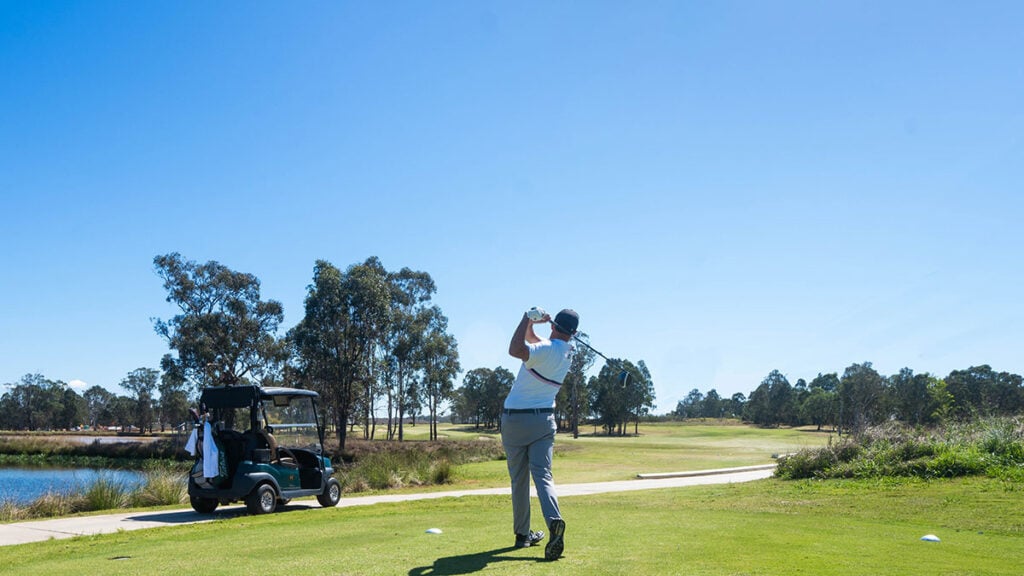Structuring your practice in a way that promotes improvement while being interesting and fun is the key to success
My philosophy for practising is pretty simple. I want to be better at the end of a session than when I started. To do this, I ask the question, “How can I get better today?”
Sounds straightforward but for a lot of golfers when they practise, a couple of scenarios usually occur: 1. They go off on tangents when things aren’t going so well and end up tying themselves in knots; or 2. They get into a nice groove with their swings, but when they get on the golf course that same rhythm is nowhere to be found.
The second scenario is better than the first, but it’s still not productive because those good swings on the range aren’t being transferred to the golf course. Structuring your practice in a way that promotes improvement while being interesting and fun is what we’re after. It’s all well and good to hit balls working on your full swing and short game, but how do you know if you’re getting better? The answer is to make a plan for the session and divide your time up into three important areas: technical, skill and competitive work.
If, for example, you’re working on the full swing, start your session by focusing only on the technical aspects of the swing, not with where the ball goes. Trust me, this is hard to do because it’s very easy to get sucked in by what’s happening with the ball… hence the going off on tangents scenario described above. It takes discipline to ignore the poor shots and simply focus on technique. Factor in a certain number of balls (or time) to hit in this part of your practice, so you give yourself a cut-off point to stop.
Next, move onto the skill work. This entails working on different shots and being creative. For the full swing, a game I like to play is hitting one club to the first five targets on the range. For example, I’ll hit a 7-iron to targets spread out from 50 to 150 metres. Experiment by hitting various shots at each target. These shots become very useful on the course when you find yourself in the trees and have to chip out, curve it around an obstacle, or it’s a windy day and have to knock one down against the wind. If you’ve never practised these shots, how will you know how to hit them?
The last piece of the practice session is some competitive work. To consolidate all the technical and skill work you’ve just done, it’s important to put yourself under some pressure by playing a game on the range that requires a result. This part of the session is for working on your pre-shot routines because these are what you will rely on out on the golf course. There are various competitive games, but my favourite is hitting three shots in a row between two targets. Miss and start again. You can make this as easy or difficult as you like, but a good guide is when you get to the third attempt in a row you should feel uncomfortable, similar to what you’d feel on the golf course.
The same formula as set out above goes for your short game and putting. It’s a structure I relied on throughout my whole career to keep practice productive and fun. Plus, it’s hard not to get better every day.




